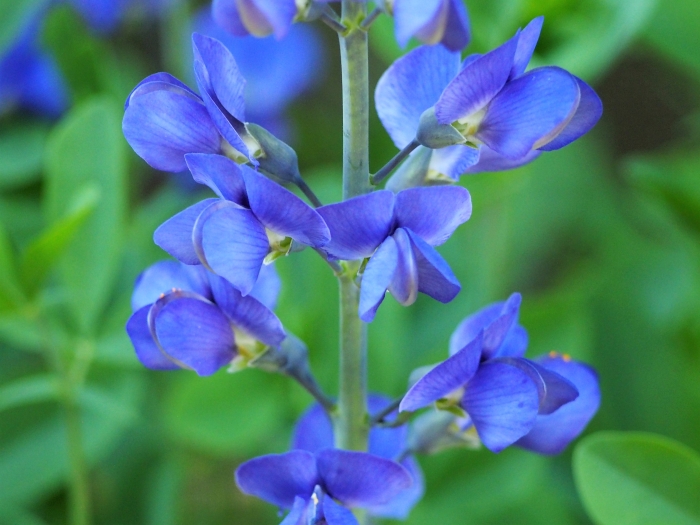Blue Wild Indigo
(Baptisia australis)
Blue Wild Indigo (Baptisia australis)
/
/

Agnieszka Kwiecień, Nova
CC BY-SA 4.0
Image By:
Agnieszka Kwiecień, Nova
Recorded By:
Copyright:
CC BY-SA 4.0
Copyright Notice:
Photo by: Agnieszka Kwiecień, Nova | License Type: CC BY-SA 4.0 | License URL: https://creativecommons.org/licenses/by-sa/4.0 | Uploader: Nova | Publisher: Wikimedia Commons | Title: Baptisia_australis_Baptysja_błękitna_2021-06-02_03.jpg | Notes: == {{int:filedesc}} == {{Information |Description=Baptisia australis |Source=[https://www.flickr.com/photos/peganum/7374644914/ Baptisia australis] |Date=2012-06-15 10:57 |Author=[https://www.flickr.com/people/26698606@N03 peganu










































































Estimated Native Range
Summary
Baptisia australis, commonly known as Blue Wild Indigo, is a deciduous perennial herb native to open woodlands, prairies, and grasslands in the Central and Eastern USA. It can reach heights of 1 to 1.5 meters and widths of 0.6 to 1 meter. The plant features striking blue to indigo flower spikes that bloom from late spring to early summer, depending on the region, and are quite showy. The fruit is a distinctive bluish-black inflated pod. Blue Wild Indigo is valued for its ornamental flowers, ease of maintenance once established, and its ability to fix nitrogen, improving soil fertility.
Blue Wild Indigo is used in naturalistic plantings, as a border plant in gardens, and for restoration projects. It prefers full sun to part shade and is adaptable to a range of soil conditions, though it thrives in lime-free, well-drained stony soil. It is drought-tolerant, requiring water only during prolonged dry spells. While it has a deep taproot making it difficult to transplant, this feature also allows it to be quite drought-resistant once established. It may lose leaves early in the fall, which can be mitigated by cutting back dead stems. It is hardy in USDA zones 3 through 8 and can be prone to root rot in poorly drained soils.CC BY-SA 4.0
Blue Wild Indigo is used in naturalistic plantings, as a border plant in gardens, and for restoration projects. It prefers full sun to part shade and is adaptable to a range of soil conditions, though it thrives in lime-free, well-drained stony soil. It is drought-tolerant, requiring water only during prolonged dry spells. While it has a deep taproot making it difficult to transplant, this feature also allows it to be quite drought-resistant once established. It may lose leaves early in the fall, which can be mitigated by cutting back dead stems. It is hardy in USDA zones 3 through 8 and can be prone to root rot in poorly drained soils.CC BY-SA 4.0
Plant Description
- Plant Type: Herb
- Height: 3-4 feet
- Width: 3-4 feet
- Growth Rate: Slow
- Flower Color: Blue, Purple
- Flowering Season: Spring, Summer
- Leaf Retention: Deciduous
Growth Requirements
- Sun: Full Sun, Part Shade
- Water: Low, Medium
- Drainage: Medium, Slow
Common Uses
Bank Stabilization, Bee Garden, Bird Garden, Border Plant, Butterfly Garden, Deer Resistant, Drought Tolerant, Erosion Control, Fire Resistant, Hummingbird Garden, Low Maintenance, Rabbit Resistant, Rock Garden, Showy Flowers, Street Planting
Natural Habitat
Open woodlands, prairies, and grasslands
Other Names
Common Names: Blue False Indigo , Baptisia , Baptisie Australe , Baptisie Bleue , Färgväppling
Scientific Names: Baptisia australis , Podalyria australis , Sophora australis , Baptisia caerulea , Podalyria caerulea , Ripasia caerulea , Sophora caerulea
GBIF Accepted Name: Baptisia australis (L.) R.Br.